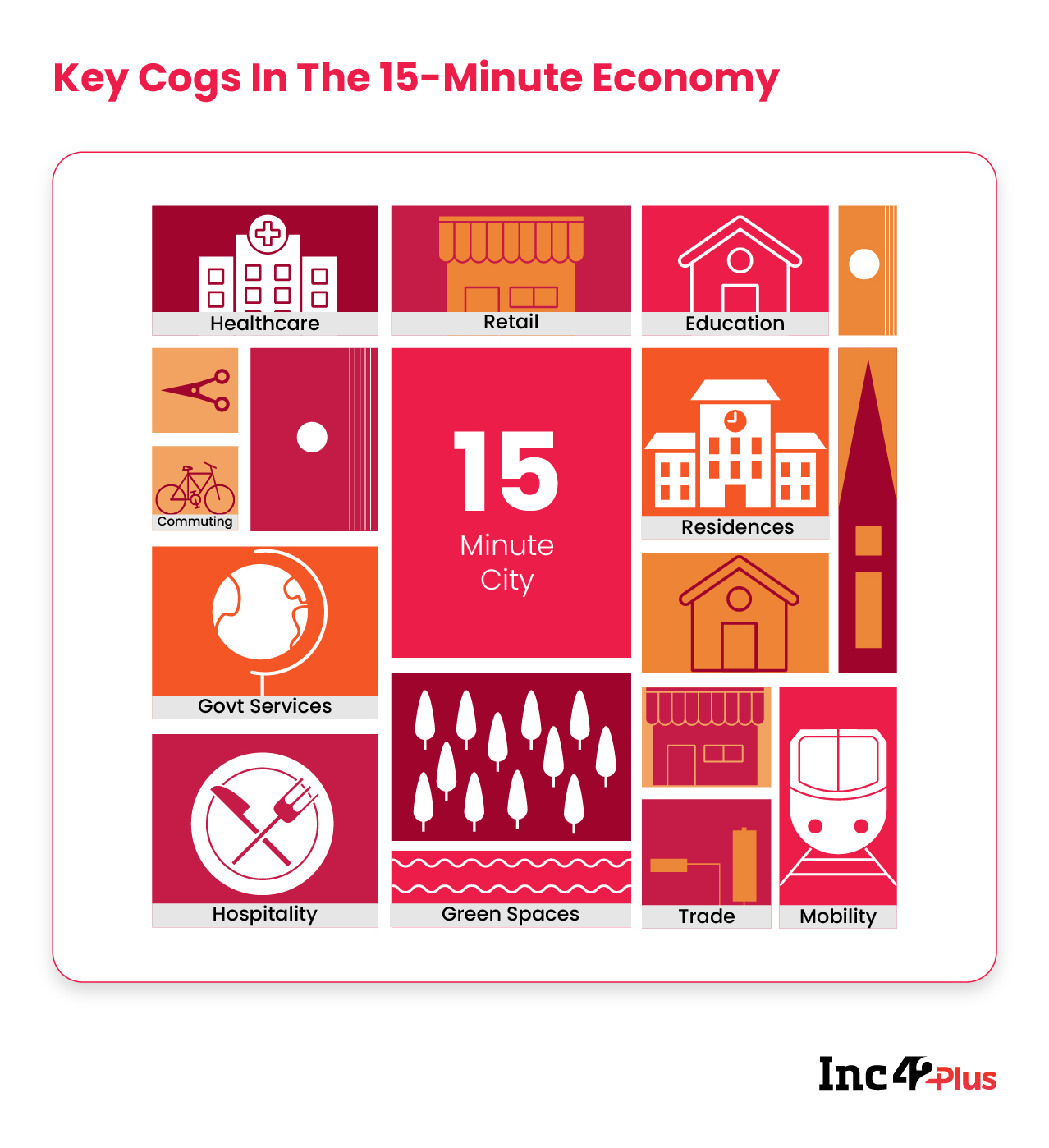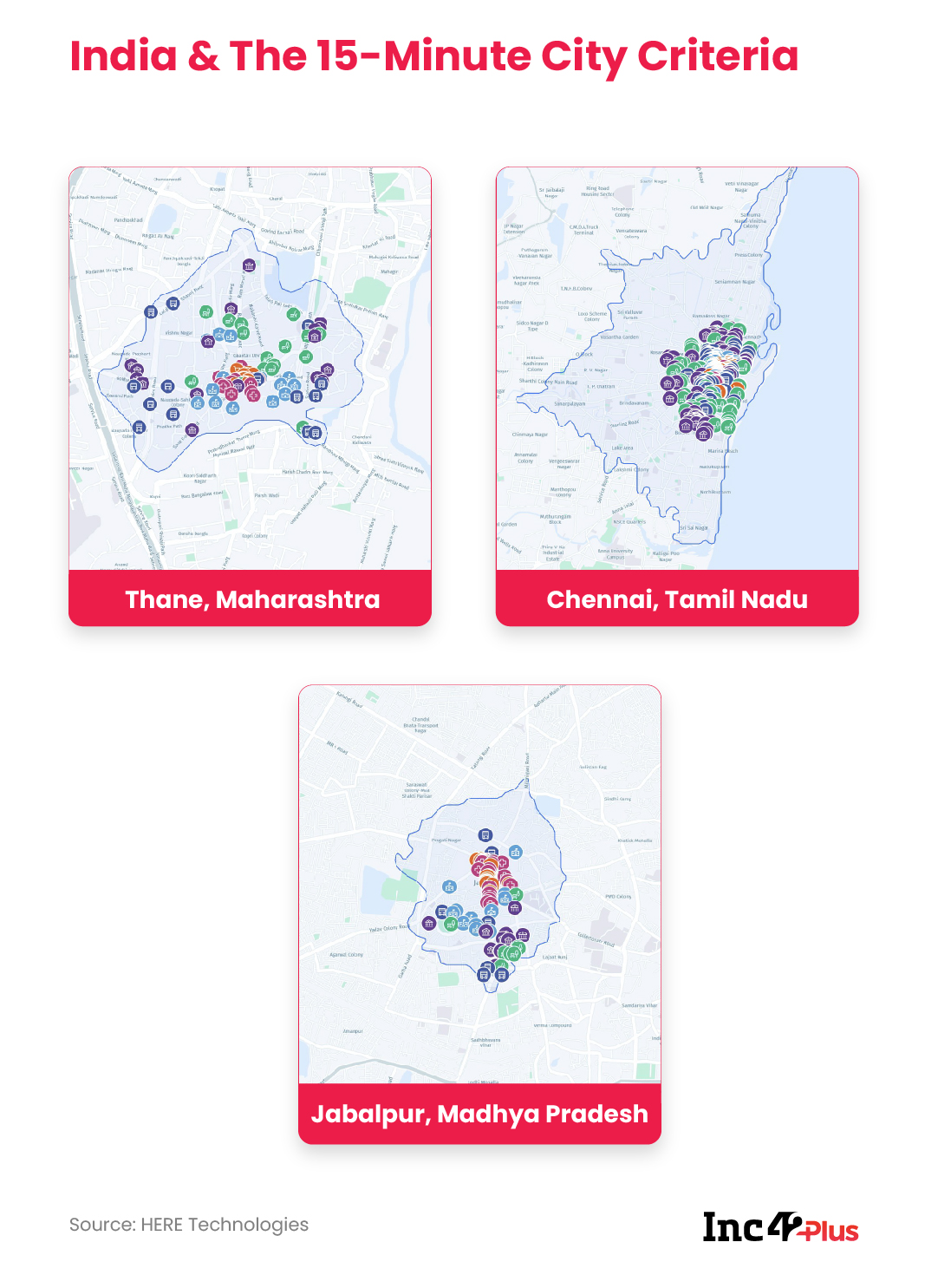The 15-minute economy is defined by on-demand digital services that cater to clusters within cities. And it's well and truly arrived in India, underlined by billions of dollars being invested by startups over 2021
“Swiggy To Invest $700 Mn For Pan-India Delivery In 15 Minutes”
“BigBasket To Enter QCommerce Bandwagon With BBNow”
“10 Cities Get 10-Min Grocery Delivery: Grofers”
“Dunzo To Add 300 Micro-Fulfilment Centres To Deliver Grocery In Under 19 Minutes”
“Ola Pilots 15-Minute Grocery Delivery”
“Zepto Raises $60 Mn Funding To Deliver Groceries In 10 Minutes”
As we count down to 2022, one of the more enduring themes of 2021 has been the rush for express hyperlocal services and the need to get closer to consumers. These are just some of the headlines of the past few weeks and some like Zepto are reported to be close to raising more — which could make it the fastest unicorn in India.
While billions are being poured into hyperlocal and essential delivery businesses by the likes of Zomato, Swiggy, Dunzo, and others, the likes of Amazon and Flipkart are promising two-hour delivery, which seems relatively snail-paced. The stronghold of startups and delivery companies is evident in the hyperlocal domain, which is giving rise to a new phenomenon, at least in the cities.
We call this the 15-minute economy, an extension of the 15-minute city concept that is currently sweeping across Western Europe and the US. The 15-minute economy is defined by on-demand digital services that cater to these cities. And it’s well and truly arrived in India.
Put simply, a 15-minute city is one where hospitals, schools, business establishments, retail outlets and more are within a 15-minute radius from the home for bicycles and pedestrians, with low latency in connectivity, communication and mobility. Open green spaces coexist with ‘green’ concrete structures, and everything one needs to go about their daily life is dotted around the home.
Multiple 15-minute pockets have emerged in India’s major cities in the past few months, even though we are far away from seeing a true 15-minute city.
Startups are taking utmost advantage of this shift, but there are plenty of hurdles in the way and these are also some of the more pressing concerns of our times. So as we hurtle forward into 2022, let’s see how the 15-minute economy is playing out.
The 15-Minute City
At the heart of this new form of economy is the idea of a 15-minute city. Without going into a history lesson, the basic idea stems from the need to reduce carbon emissions and it is essentially a decentralised urban planning model.
As with most things that are decentralised, the idea is thought to be radical, but actually it’s common sense. Localised neighbourhoods where residents can get everything they require within 15-minutes by walking, cycling or on public transport cannot possibly harm the quality of life. This includes work and everything that one would need for work.
Short distances between living, working, and consumption are certainly the mantra of the future in the post-Covid phase, because it involves less pollution, fewer hours of commute and more time for the community. 
The goal is to create several economic and social hubs that will keep communities thriving while reducing the reliance on a central business district, which significantly increases vehicular emissions, and contributes to inequality.
As the population in metros continues to grow, the 15-minute economy will shape lifestyles. This has indeed been accelerated by the pandemic, where most people need everything within a short radius from their home and work. Consumers are also willing to spend more for on-demand and instant services.
This has created a condition where the typically-high delivery costs are falling significantly, and actually contributing positively to the unit economics.
The 15-Minute Sectors
So what does it take to fuel the 15-minute economy? Breaking it down, we are looking at services such as education, healthcare, commercial spaces and offices, coworking facilities, markets for trade and general needs, retail outlets, dark stores and hospitality, open green spaces, all within a 15-minute radius of the home.
These need to be connected through public transport, pedestrian ways, or dedicated cycle lanes. In lieu of cycles, one could say that the Indian 15-minute economy is powered by electric two-wheelers and rickshaws. But other than that is such a city even possible in India?
The 15-minute economy calls for concerted development of these different sectors, and many of them are reliant on technology and digital services. Sounds like any city in 2021, right? It would, but even the best of cities in India cannot claim to be fully ready.
According to HERE Technologies’ 15-minute city experiment, there are more than 20 such cities in India — at least among the cities we manually typed the name in for. Besides the metros, this list included small but densely populated cities such as Thane in Maharashtra and even smaller ones like Jabalpur in Madhya Pradesh.
The criteria for qualification include proximity from the city centre to schools, places of leisure, hospitals, groceries among others. But the city centre is not a good measure of where residents live. Most cities will have one area with many hospitals and some areas with none, while the spread is similar for schools.
Besides, I know for a fact that Thane is not the kind of city where things are a 15-minute walk away, even though HERE says so. Maps don’t paint an accurate picture, so I wouldn’t put too much emphasis on what one interactive tool says.
Moreover, only a handful of Indian cities are even familiar with the concept of a bicycle lane — forget having one — and there’s even less confidence in public transport in such a short radius.

One could say that outside pockets within the metros and the big Tier 1 cities, India is far away from fulfilling the 15-minute economy goals. But it only means that we have the opportunity to change things right now.
The 15-Minute Gig Worker
The billions being invested might just be the start of something new in that sense, but it also needs to focus on sustainability. While that primarily means the environment, it also includes sustainable practices to protect the ones that power this 15-minute machine.
We are talking about the gig workers that are the engines of mobility, home delivery, hospitality, retail and many other sectors. Studies claim that more than 8 Mn Indians are gig workers — largely based in cities — which is expected to grow to 24 Mn by 2023-24 and 90 Mn before the end of the decade.
The gig economy is spread far and wide and the 15-minute city cannot function without this shared resource. But it is not just about the big cities of today, but the ones that are coming up rapidly.
Many experts told us that startups have built instant grocery delivery and food delivery empires on the backs of these gig workers, who have not got due credit or even basic guarantees of pay. This can change if regulations are put into place right now, particularly if the 15-minute economy has to be spread beyond the major cities.
There are other risks too. The 15-minute economy could lead to creating divides within one city, where communities don’t know each other, or where self-contained neighbourhoods face unequal distribution of goods. Again, this is something that needs to be addressed before the 15-minute economy takes full effect.
While the startups that cater to the 15-minute economy have pretty much focussed on the big cities today, the real opportunity will lie in collaborating to build this from scratch in new towns and cities. As rural India continues to come online, the focus of startups will shift, and here there’s a chance to start from scratch and not repeat the mistakes that have been made in getting here so far.
Collaboration is THE key in the 15-minute economy, where no part is less vital than the other. It needs to function as a well-oiled machine and that’s only possible when the collective vision is aligned.
Till next week,
Nikhil Subramaniam
Images: Aprajita Ashk




![[The Outline By Inc42 Plus] The 15-Minute Economy](https://inc42.com/cdn-cgi/image/quality=75/https://asset.inc42.com/2021/12/1360x1020-1.jpg)








![[The Outline By Inc42 Plus] The 15-Minute Economy-Inc42 Media](https://asset.inc42.com/2023/09/featured.png)
![[The Outline By Inc42 Plus] The 15-Minute Economy-Inc42 Media](https://asset.inc42.com/2023/09/academy.png)
![[The Outline By Inc42 Plus] The 15-Minute Economy-Inc42 Media](https://asset.inc42.com/2023/09/reports.png)
![[The Outline By Inc42 Plus] The 15-Minute Economy-Inc42 Media](https://asset.inc42.com/2023/09/perks5.png)
![[The Outline By Inc42 Plus] The 15-Minute Economy-Inc42 Media](https://asset.inc42.com/2023/09/perks6.png)
![[The Outline By Inc42 Plus] The 15-Minute Economy-Inc42 Media](https://asset.inc42.com/2023/09/perks4.png)
![[The Outline By Inc42 Plus] The 15-Minute Economy-Inc42 Media](https://asset.inc42.com/2023/09/perks3.png)
![[The Outline By Inc42 Plus] The 15-Minute Economy-Inc42 Media](https://asset.inc42.com/2023/09/perks2.png)
![[The Outline By Inc42 Plus] The 15-Minute Economy-Inc42 Media](https://asset.inc42.com/2023/09/perks1.png)

![[The Outline By Inc42 Plus] The 15-Minute Economy-Inc42 Media](https://asset.inc42.com/2023/09/twitter5.png)
![[The Outline By Inc42 Plus] The 15-Minute Economy-Inc42 Media](https://asset.inc42.com/2023/09/twitter4.png)
![[The Outline By Inc42 Plus] The 15-Minute Economy-Inc42 Media](https://asset.inc42.com/2023/09/twitter3.png)
![[The Outline By Inc42 Plus] The 15-Minute Economy-Inc42 Media](https://asset.inc42.com/2023/09/twitter2.png)
![[The Outline By Inc42 Plus] The 15-Minute Economy-Inc42 Media](https://asset.inc42.com/2023/09/twitter1.png)




 Ad-lite browsing experience
Ad-lite browsing experience